Lunar New Year, more commonly known as Chinese New Year in America, hit Seoul a few weeks after the start of 2012 and the entire country of Korea went on vacation. While most people use this opportunity to visit family in their home towns, I took advantage of the long break to head off to Japan. At this point, it had been nearly a month into my school’s intensive winter camp and a break from everything work related was drastically needed before I would have eventually gone crazy and thrown a child out the window.
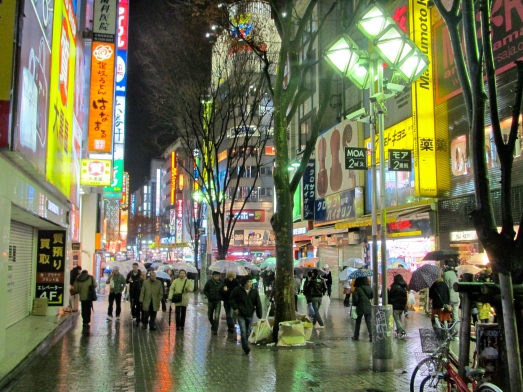 I went to Japan with a couple of my co-workers and we decided to split the trip up and do two different cities: Tokyo and Kyoto. Tokyo, as 99% of the world probably knows, is the largest city in the world and seemingly oozes out neon while Kyoto, as fewer people may be aware of, is the ancient imperial capital that has great examples of classic Japanese architecture around every corner.
I went to Japan with a couple of my co-workers and we decided to split the trip up and do two different cities: Tokyo and Kyoto. Tokyo, as 99% of the world probably knows, is the largest city in the world and seemingly oozes out neon while Kyoto, as fewer people may be aware of, is the ancient imperial capital that has great examples of classic Japanese architecture around every corner.
The first stop was Tokyo. Compared to Tokyo, any city in the world looks like a small town out in western Kansas. The buildings are giant and stretch out farther than the eye can see in every direction. We stayed in the Shinjuku area, a dense, neon-coated part of the city. In Shinjuku we walked around the canyons of skyscrapers to a park and took in the sights before heading up to the top of the Municipal Government Building. From the top of the Municipal Government Building we got our first view of just how massive the city is. There wasn’t a spot as far as the eye could see that remained undeveloped until Mount Fuji way out in the distance. Shinjuku is also home to Kabukicho, Tokyo’s red light district. In addition to gawking at the blatantly obvious hookers and naughty nurse billboards the size of buildings we also managed to squeeze in dinner and a karaoke session in our own private karaoke room overlooking the Tokyo skyline.
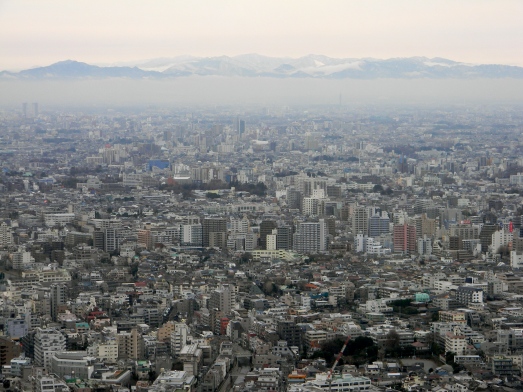 In Tokyo, there are what feels like millions of 20-somethings wandering around the city dressed like the lovechild of Hello Kitty and Ozzy Osbourne and this group seems to have their headquarters centered in the Harajuku district. Harajuku is more low-rise and pedestrian-oriented neighborhood than the rest of Tokyo. In addition to admiring the outrageous fashion, there are also plenty of restaurants and shops for everyone to stay occupied. After exploring Harajuku we went to Shibuya, Tokyo’s equivalent to Times Square. Shibuya is probably best known for the intersection in which a football stadium’s worth of people cross the streets every two minutes. After crossing the street multiple times and getting swept away in the sea of people, we went to a pachinko parlor. Pachinko is the Japanese version of gambling. Gambling for money is illegal in Japan so people instead gamble for little metal balls, which are in turn exchanged for cash. Oh the crazy Japanese and their loopholes. Pachinko parlors are all over the city and the actual game of pachinko is like an odd, flashy mixture of a slot machine and pinball. When we finished gambling away our life savings we walked back around Shibuya and admired the neon-center of the city at night.
In Tokyo, there are what feels like millions of 20-somethings wandering around the city dressed like the lovechild of Hello Kitty and Ozzy Osbourne and this group seems to have their headquarters centered in the Harajuku district. Harajuku is more low-rise and pedestrian-oriented neighborhood than the rest of Tokyo. In addition to admiring the outrageous fashion, there are also plenty of restaurants and shops for everyone to stay occupied. After exploring Harajuku we went to Shibuya, Tokyo’s equivalent to Times Square. Shibuya is probably best known for the intersection in which a football stadium’s worth of people cross the streets every two minutes. After crossing the street multiple times and getting swept away in the sea of people, we went to a pachinko parlor. Pachinko is the Japanese version of gambling. Gambling for money is illegal in Japan so people instead gamble for little metal balls, which are in turn exchanged for cash. Oh the crazy Japanese and their loopholes. Pachinko parlors are all over the city and the actual game of pachinko is like an odd, flashy mixture of a slot machine and pinball. When we finished gambling away our life savings we walked back around Shibuya and admired the neon-center of the city at night.
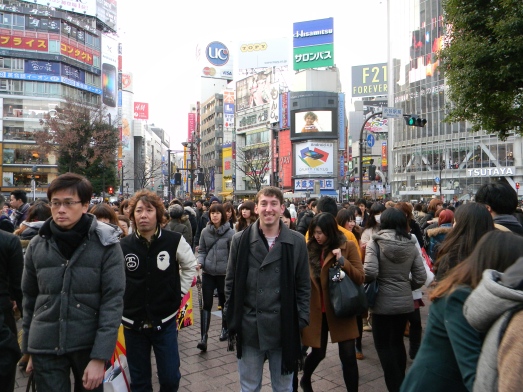 On our last day in Tokyo we headed to the river to take a boat cruise to get a view of the skyscrapers from the river. Our boat took us from Asakusa in the north down to the Tokyo Tower in the south. The Tokyo Tower is a bright orange full-size reconstruction of the Eiffel Tower. We went up right before sunset to see the city in the daytime and then gradually turn into the lights Tokyo is known for at night. Despite some rain, the view was unlike anything I had ever seen before. After descending the tower we left for Tokyo Station where we got on an overnight bus to Kyoto. The seats on the bus turned into beds and not once in my life have I ever slept so well on a moving vehicle.
On our last day in Tokyo we headed to the river to take a boat cruise to get a view of the skyscrapers from the river. Our boat took us from Asakusa in the north down to the Tokyo Tower in the south. The Tokyo Tower is a bright orange full-size reconstruction of the Eiffel Tower. We went up right before sunset to see the city in the daytime and then gradually turn into the lights Tokyo is known for at night. Despite some rain, the view was unlike anything I had ever seen before. After descending the tower we left for Tokyo Station where we got on an overnight bus to Kyoto. The seats on the bus turned into beds and not once in my life have I ever slept so well on a moving vehicle.
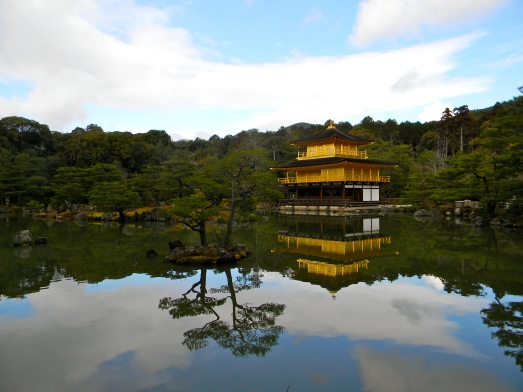 We got to Kyoto at about 7:00 am. The first thing we saw was Kinkaku-ji, a temple in the hills made from gold. The temple itself in addition to the surrounding gardens were absolutely gorgeous. Apart from the temple, there was nothing man-made in sight, something nearly impossible to come by in Korea. Up next was the To-ji shrine, the tallest pagoda in Japan and it really was tall. From To-ji we took a bus to the Fushimi Inari shrine. The Fushimi Inari shrine is the tunnel of orange pillars that is on the cover of countless Japan guidebooks. Like Kinkaku-ji, there was plenty of the nature around the shrine that both Tokyo and Seoul lack. After a day of temples and shrines, we spent the evening in Gion, the geisha district of Kyoto. Gion is a district of Kyoto with blocks and blocks of traditional architecture. The old buildings and the geishas walking down the sidewalk fully dressed in their kimonos and face paint in a completely non-touristy way was like being a different universe when compared to the modern lights of Tokyo. After dinner and sake we got back on another night bus to take us back to Tokyo to get on a flight bound for Seoul.
We got to Kyoto at about 7:00 am. The first thing we saw was Kinkaku-ji, a temple in the hills made from gold. The temple itself in addition to the surrounding gardens were absolutely gorgeous. Apart from the temple, there was nothing man-made in sight, something nearly impossible to come by in Korea. Up next was the To-ji shrine, the tallest pagoda in Japan and it really was tall. From To-ji we took a bus to the Fushimi Inari shrine. The Fushimi Inari shrine is the tunnel of orange pillars that is on the cover of countless Japan guidebooks. Like Kinkaku-ji, there was plenty of the nature around the shrine that both Tokyo and Seoul lack. After a day of temples and shrines, we spent the evening in Gion, the geisha district of Kyoto. Gion is a district of Kyoto with blocks and blocks of traditional architecture. The old buildings and the geishas walking down the sidewalk fully dressed in their kimonos and face paint in a completely non-touristy way was like being a different universe when compared to the modern lights of Tokyo. After dinner and sake we got back on another night bus to take us back to Tokyo to get on a flight bound for Seoul.
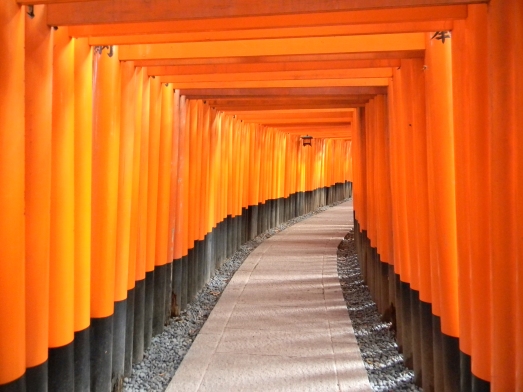 Japan was one of the strangest, coolest places I have had the privilege of visiting. The amazing food (sushi, udon, tempua, surprise wasabi appearances, and a never-ending supply of sake), the perfect contrast of Tokyo and Kyoto (which were both outstanding on their own), and unique mix of old and new were all reasons that make me want to look into teaching in Japan sometime in the future. The only downside is that Japan is insanely expensive, but who needs money when sake is (relatively) cheap and plentiful?
Japan was one of the strangest, coolest places I have had the privilege of visiting. The amazing food (sushi, udon, tempua, surprise wasabi appearances, and a never-ending supply of sake), the perfect contrast of Tokyo and Kyoto (which were both outstanding on their own), and unique mix of old and new were all reasons that make me want to look into teaching in Japan sometime in the future. The only downside is that Japan is insanely expensive, but who needs money when sake is (relatively) cheap and plentiful?

